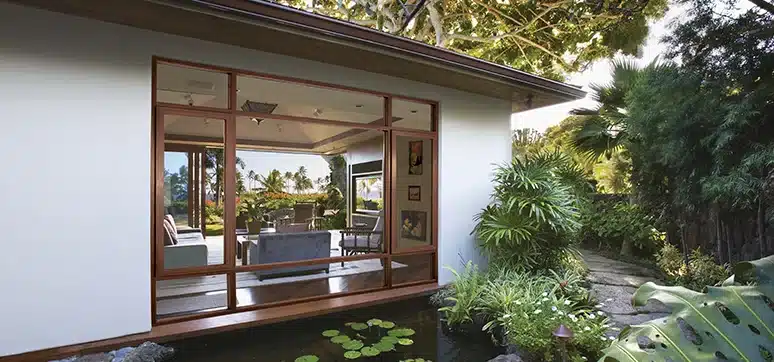As the climate crisis intensifies and its effects become increasingly apparent, the architecture and construction sector face a critical imperative. The industry must acknowledge its environmental footprint and prioritize strategies to diminish energy usage, whether through design choices, construction methods or the adoption of innovative technologies. And this change should not come at the cost of aesthetics or the comfort of the occupants. The only solution that caters to all these problems is energy-efficient windows and doors.
These energy-efficient windows and doors play a pivotal role in improving thermal performance and maintaining sustainability in buildings as compared to their usual counterparts. Conventional windows are responsible for approximately 8.6% of energy use in buildings and they influence end uses that make up about 43% of total building energy consumption. Inefficient windows can lead to unnecessary energy loss, affecting both heating and cooling costs. Hence, by upgrading to energy-efficient alternatives homeowners can reduce their energy consumption and contribute to a cleaner environment. In fact, ENERGY STAR estimates that energy-efficient windows and doors can help homeowners reduce their utility bills by up to 12%.
Their ability to regulate temperature fluctuations leads to a more consistent and enjoyable living space for occupants. This is because Fenesta uPVC windows and doors have been designed with advanced technologies and innovative designs, which help minimize heat transfer, air infiltration as well as energy loss. They facilitate higher energy savings, improved comfort conditions and reduced environmental impact.
Key Features of Energy-Efficient Windows and Doors
Energy-efficient uPVC windows and doors have several key features that contribute to enhanced thermal performance and year-round comfort. Low-E coatings play a pivotal role by blocking ultraviolet and infrared light while allowing visible light transmission, thereby minimizing heat transfer and maintaining optimal temperatures within the home. Additionally, insulating window units, such as double-pane or triple-pane windows with gas fills, provide superior thermal insulation by trapping heat in winter and preventing excess heat gain in summer.
Modern sliding window frames further bolster insulation and minimize air leakage, utilizing materials like vinyl, fiber glass, or wood-clad frames to ensure excellent thermal properties. Moreover, these energy-efficient double glazed windows optimize thermal energy demands by minimizing direct sunlight exposure on hot days, reducing the load on cooling systems, while maximizing sunlight penetration during colder months to naturally warm living spaces, potentially leading to smaller HVAC equipment sizes and facilitating transitions to energy-efficient heat pumps.
In addition to improving thermal performance, energy-efficient windows and doors also offer other significant benefits. They help to mitigate condensation buildup, which can lead to mold growth and indoor air quality issues. The enhanced insulation properties of these products also provide better soundproofing, reducing noise pollution from outside sources and creating a quieter, more peaceful indoor environment.
Role of Smart Energy-Efficient Fenestration
Offering a paradigm shift in fenestration technology, energy-efficient fenestrations prioritize both functionality and environmental impact. Remote monitoring capabilities provide real-time insights into energy efficiency and insulation performance, empowering homeowners to optimize settings based on weather conditions and daily routines. Automatic sliders streamline indoor-outdoor transitions with seamless operation, ensuring an airtight seal for enhanced comfort and energy savings.
Furthermore, thermal break technology in balcony sliding windows minimizes heat or cold transfer between frames, reducing condensation and bolstering thermal efficiency. These advancements underscore a commitment to sustainable living without compromising on aesthetics or comfort. Additionally, these fenestration solutions ensure consistent indoor comfort throughout the year, eliminating discomfort caused by windows or poorly insulated doors. Many energy-efficient products are manufactured using eco-friendly materials and production processes, further minimizing their environmental impact. Opting for eco-friendly materials and designs aligns with our collective responsibility to protect the environment and promote sustainable living practices.
Market Adoption and Implementation
While technological advancements are essential, successful adoption requires proper installation and market transformation. Research, development and long-term investments are crucial for achieving a de-carbonized building sector. Once developed, these technologies need to be integrated into buildings. Proper guidance ensures that energy benefits are realized.
Conclusion: Investing in Sustainability
In conclusion, energy-efficient windows and doors offer numerous advantages for improving thermal performance, reducing energy consumption, and enhancing indoor comfort. By investing in these sustainable solutions, homeowners can enjoy long-term savings on energy bills, increased property value, and a healthier, more environmentally friendly living environment.














